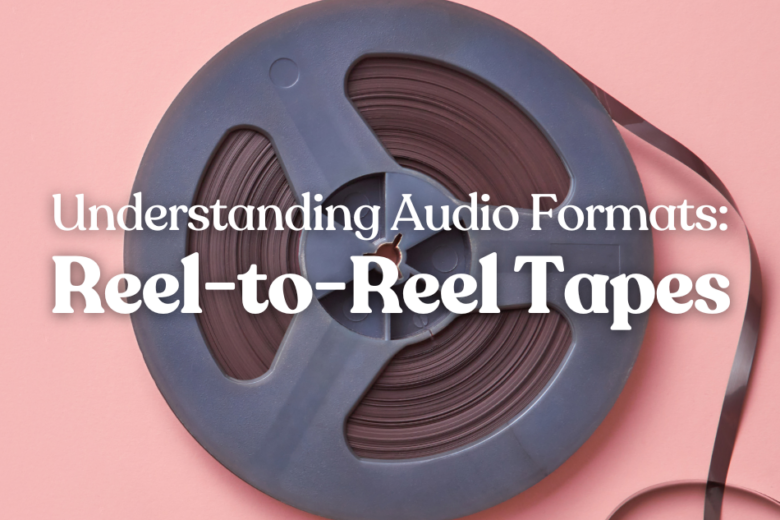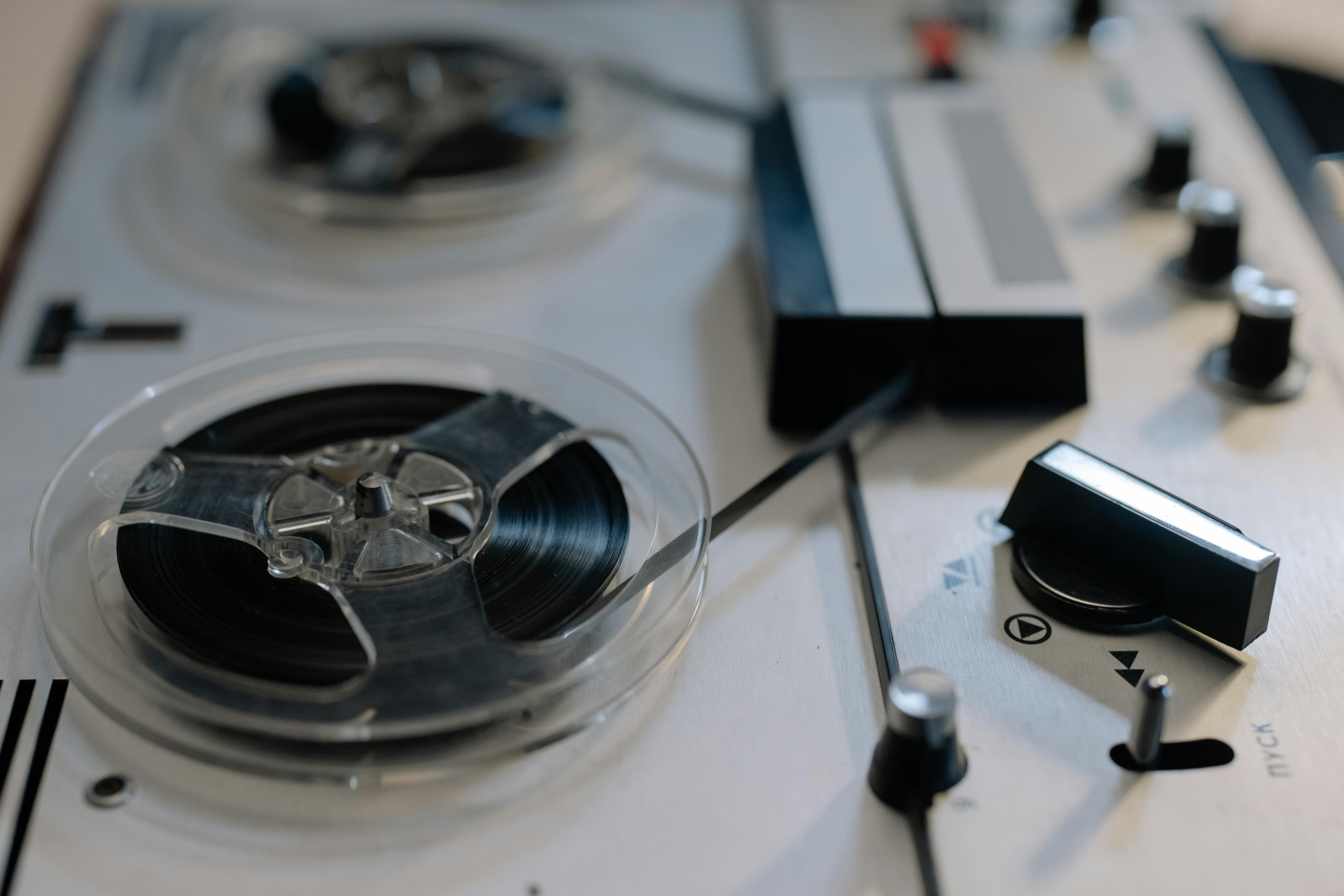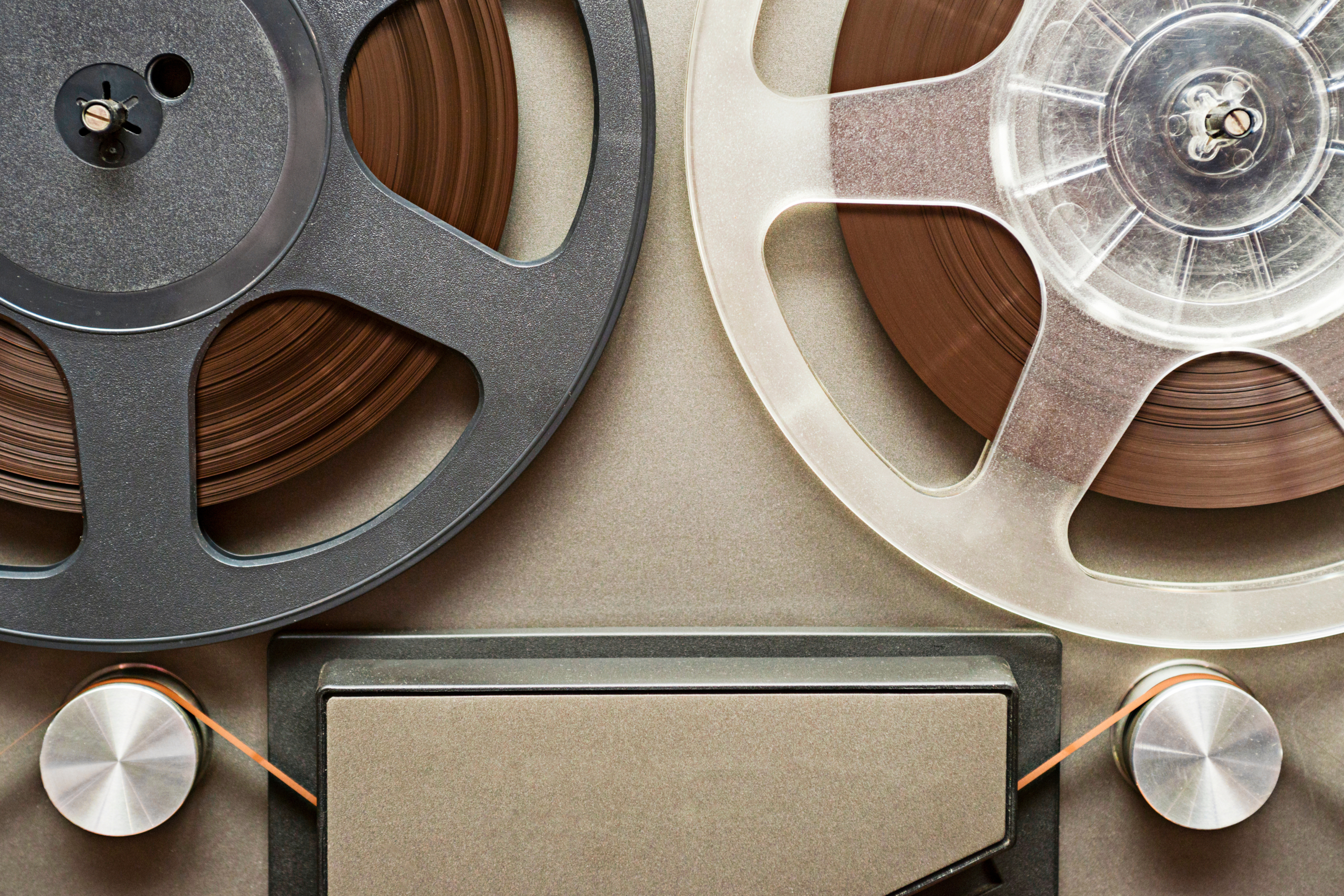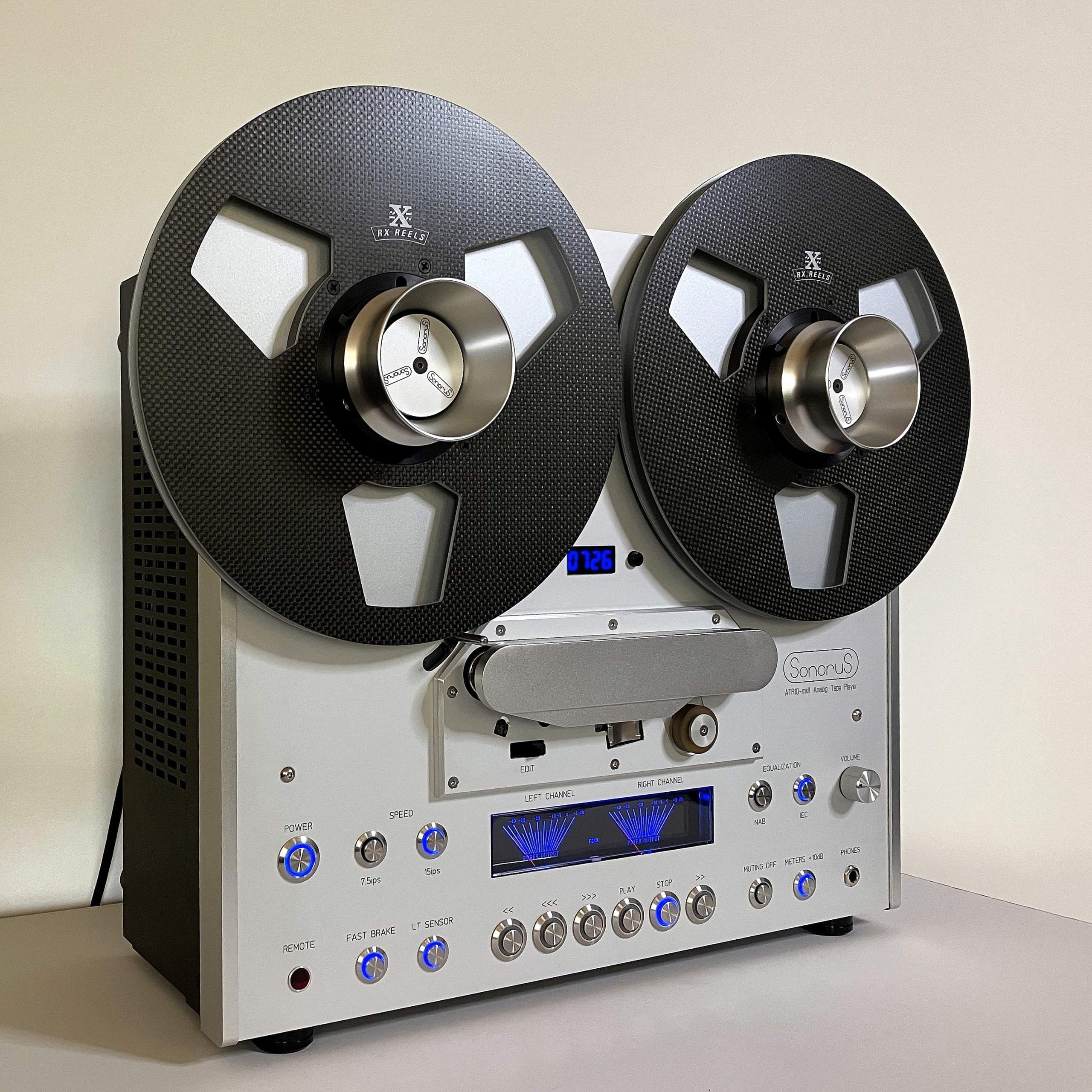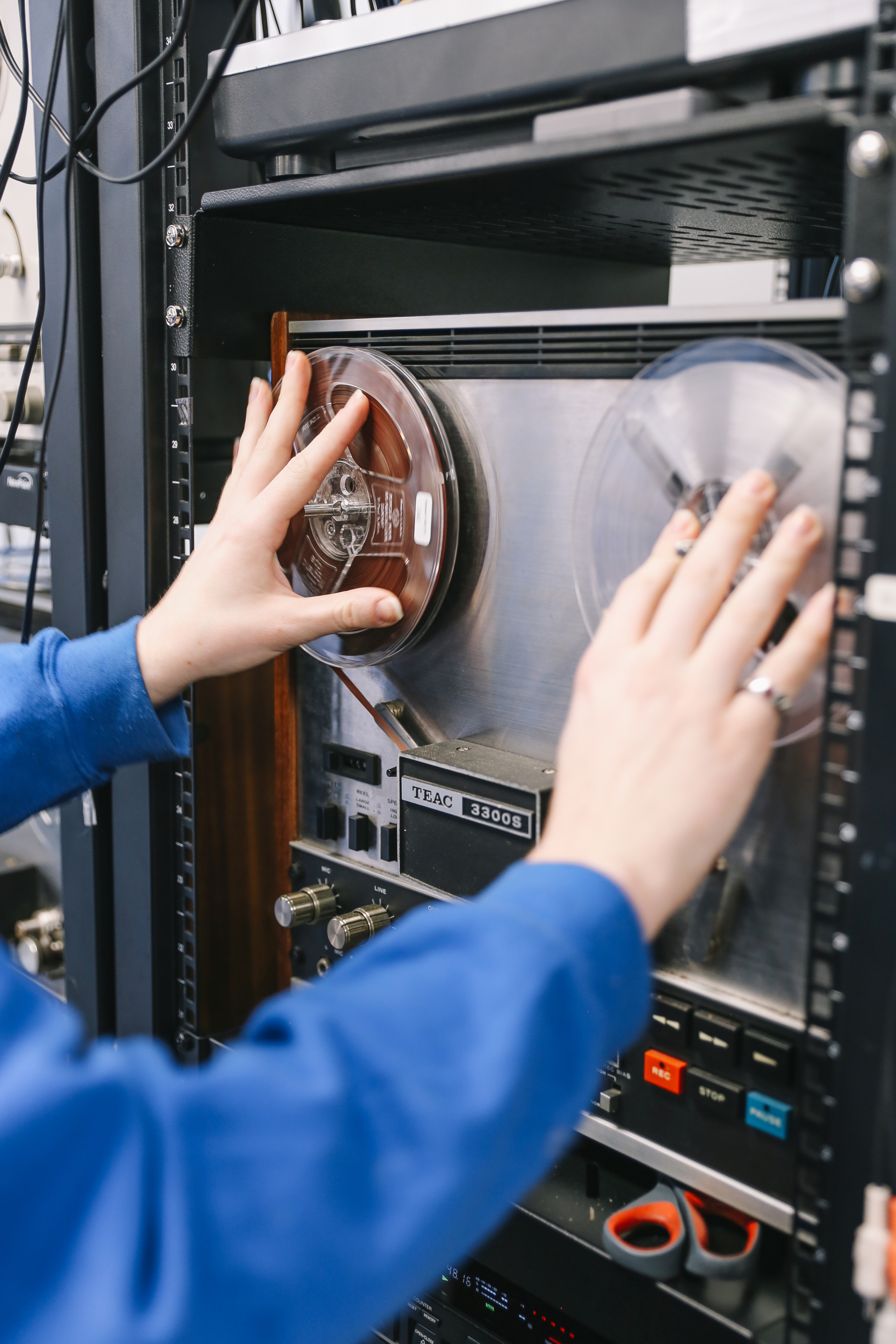Reel-to-reel tapes, also known as R2R tapes and open-reel tapes, are an old audio recording format that originated almost 100 years ago and became popular in the 1950s and 1960s. If you have old reel-to-reel tapes in your collection, now could be the time to sort through and appraise them since their popularity has resurfaced in recent years.
In this guide, we cover a bit of history and what makes reel-to-reel tapes so special compared to other formats.
WHAT ARE REEL-TO-REEL TAPES?
Reel-to-reel tapes are used in reel-to-reel recorders to record audio. They consist of a plastic spool with tape wrapped around it. This kind of recording equipment came before compact cassettes, with the first devices to use this kind of technology appearing as early as the 1920s. Like cassettes, they use magnetic tape to record and store audio information.
The tapes are delicate and require a lot of maintenance to function optimally — but in return, they deliver some of the highest quality audio around. They have historically been used to record political speeches and — as the quality is so good — play them to crowds to create the illusion of a live speech.
WHAT IS A REEL-TO-REEL TAPE RECORDER?
Reel-to-reel tape recorders are large recording devices with various controls at the bottom and two large reels at the top. During the recording or playback process, a reel-to-reel tape is attached to one reel, and the beginning of the tape is manually fed through the machine and attached to the second reel.
As the two reels spin, the tape is transferred from the first reel to the second. By the end of this process, the tape is collected on the second reel but in the opposite direction — in other words, backward. Before it can be played again, it needs to be rewound so the beginning of the recording is on the outside of the reel.
WHY ARE OPEN-REEL TAPES POPULAR?
Open-reels were used during World War II for various purposes and were eventually taken to Hollywood after the war where they became popular. Bing Crosby was one of the first artists to take an interest in the format and he invested money to start commercial production. After this, it became widely used by studios and music artists throughout the rest of the 20th century.
Unlike compact cassettes, which eventually became popular for their convenience and ease of use, the selling point of reel-to-reel audio tapes was their audio quality. Even now, fans of analog audio consider R2R tapes to be the pinnacle of audio fidelity and the best quality you can buy.
Many argue that, because our ears and brain are analog devices themselves, analog recordings simply resonate better with us. The sounds produced on analog tape sound more “natural,” largely because of the imperfections and impact of background noise on the recordings.
IS REEL-TO-REEL BETTER THAN VINYL?
While vinyl was the favorite format for analog enthusiasts for decades, modern reel-to-reel machines have recently taken over. Compared to vinyl, they deliver greater dynamic range — which means they can handle a wider range of volume levels than vinyl and sound good even when the volume increases or decreases.
They can also capture a wider range of frequencies, which produces sound with a greater number of subtle changes. This can sound more natural and detailed compared to vinyl. R2R recorders also keep much of the original recording unchanged, while vinyl has to process the signal to the point where a significant amount of information is lost.
Lastly, there are fewer moving parts in a reel-to-reel recorder compared to a turntable. This results in fewer problems and audio distortion during playback, creating a higher fidelity sound.
IS REEL-TO-REEL STILL USED?
Reel-to-reel was used extensively up until the 1980s but as digital audio started to take over, they fell out of use. However, enthusiasts did continue to use them and in the 21st century, a new generation of enthusiasts popped up and re-established a specialist niche for these machines.
Because of this resurgence, there is a good number of refurbished recorders and modern recorders available for purchase. Some of the newer models cost a lot of money, including the Sonorus ATR10 MKII from 2023, which sells for $35,000.
ARE REEL-TO-REEL TAPES WORTH ANYTHING?
R2R tapes can be worth some money but it’s important to remember that they don’t last forever. They are made with magnetic tape that degrades over time.
Enthusiasts will start to hear degradation on a reel-to-reel tape after about 50 plays, and the average listener after 200 to 500 plays. After about 1,000 plays, a tape will reach the end of its life.
A reel-to-reel enthusiast would transfer the recording onto a new tape long before this but if you only have a few old tapes in your house, you may prefer to just digitize the recording.
DIGITIZE YOUR DEGRADING REEL-TO-REEL TAPES
By digitizing your old reel-to-reel tapes, you can get the audio back as an .mp3 file or on a CD that you can play for as long as you want. By backing it up in a few different places, you can make sure it stays safe for the foreseeable future. You’ll still keep the original tape as well, so you can continue playing it for as long as it lasts.
At EverPresent, we can help you digitize your reel-to-reel recordings, whether you have just a few stray tapes or a collection of hundreds. We can turn each reel into an .mp3 file or split and label different tracks and get into more advanced formats like 24-bit .wav files.
We can also deal with damaged or sticky tape, so even if some of your collection seems beyond repair, we may be able to save them. If you’re interested in reel-to-reel tape conversion, come chat with us anytime to get the ball rolling.

